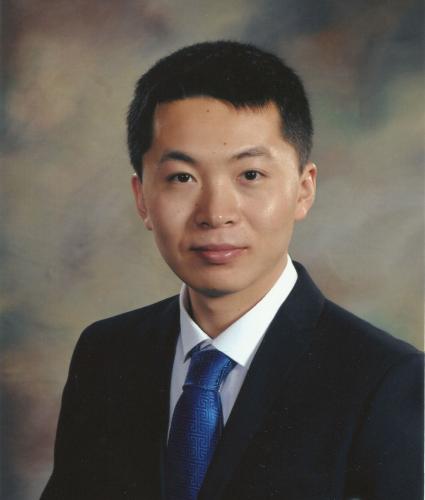
Ru Jia published 14 first author papers as an engineering Ph.D. student

“Ohio University was considered one of my dream schools because it has over 200 years of academic excellence,” explained Ru Jia, a 2018 Ph.D. graduate in chemical engineering and winner of Gustavus Smith Award for outstanding Ph.D. student in chemical engineering.
Today, Jia is a principal scientist at ChampionX in Houston, a company that supplies oilfield technology solutions. Jia’s success today was preceded by years of challenging coursework and research, beginning with his undergraduate and master’s coursework.
Jia was an accomplished student during his undergraduate and master’s studies, with research interests in organic chemistry, protein modification and biocatalysis. As a master’s student, he had three journal papers published as a first author, including one in ACS Catalysis, which has an impact factor of 13.7. When Jia enrolled at Ohio University for his graduate program, he was ready to make his contribution to OHIO’s history of academic excellence, particularly with the Institute for Corrosion and Multiphase Technology (ICMT).
His research was focused on biocorrosion in the oil and gas industry. Corrosion is the deterioration of materials as a result of chemical, physical and biological processes. Corrosion influenced or driven by the presence or activities of microorganisms is known as biocorrosion or microbiologically influenced corrosion (MIC).
Researchers at the ICMT, including Jia, have the unique background to further investigate how to reduce corrosion and preserve the integrity of major energy infrastructure. Corrosion in oil and gas production and transportation infrastructure can cause leaks and catastrophic failures, leading to environmental and economic devastation.
“It is widely accepted that MIC accounts for 20 percent of all corrosion damages. In the United States, billions of dollars are lost due to MIC every year. Thus, it is critical to understand the corrosion mechanisms that are caused by different microbes and find better ways to treat biofilms,” said Jia.
As a Ph.D. student, Jia was an innovative and diligent researcher, publishing 14 first author journal papers with an average impact factor of 6.1 based on his work at OHIO, including articles in Corrosion Science, Frontiers in Microbiology and Bioelectrochemistry. Additionally, he had 16 non-first author journal papers, totaling 30 papers that stemmed from his research at OHIO.
Jia has continued his trend of publishing high caliber research. In 2020, five of his first author papers and two of his non-first author papers made it into Elsevier’s 3-year rolling most cited articles list.
“Ru Jia had seven journal papers in the rolling lists of Elsevier journals’ ‘most cited articles’ list. Usually, a student would be lucky to have one most-cited article at one time. He had seven at the same time,” Tingyue Gu, professor in chemical and biomolecular engineering and Jia’s advisor, said.
Jia’s most impactful paper has been cited over 220 times; published in Corrosion Science, the discipline’s flagship journal; and won the Russ Best Paper Award in 2019. Titled, “Effects of biogenic H2S on the microbiologically influenced corrosion of C1018 carbon steel by sulfate reducing Desulfovibrio vulgaris biofilm,” this research explores how sulfate reducing bacteria cause corrosion. The results of the research proved that microbial respiration is a driving force in its corrosion, not H2S. This research has been used around the world as support for additional research and even the emergence of new technology.
“This work was incorporated into MICORP software which is the world's first mechanistic model-based software for the prediction of MIC pitting due to sulfate reducing bacteria based on electrochemical kinetics and mass transfer,” Jia said.
While Jia engaged in independent research, he also leaned on the support of his peers and mentors, including Gu and Valerie Young, associate professor of chemical and biomolecular engineering. Together, Gu and Young helped guide Jia in technical writing, research strategy, and career and leadership development.
Looking back, Jia is proud of the mark he made on the ICMT. As a student, he was the MIC lab coordinator and safety personnel for three years. During that period, there were no unsafe incidents and safety protocol improved. Jia embraced a leadership position in the lab and mentored other students in their experiment design and career development. Lastly, he is most proud of the impact he made on corrosion scholarship as evidenced by his h-index of 28, the cumulative impact of a person’s scholarly output, with 2,858 citations in Google Scholar.
